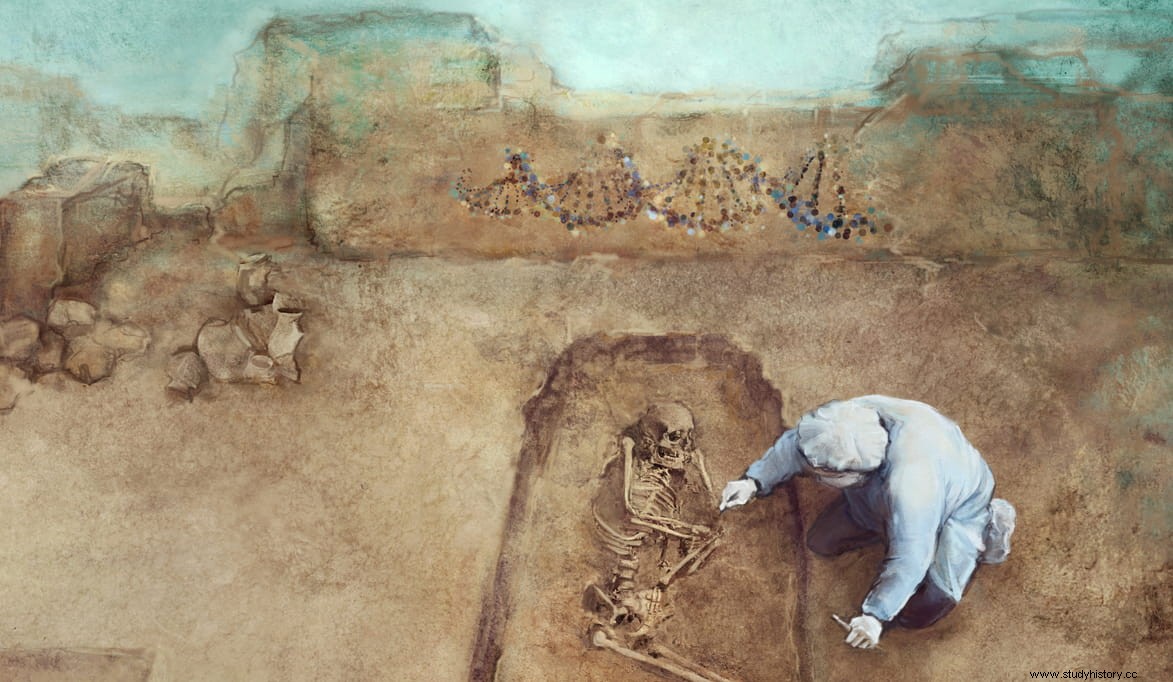A combined study of genetics and skeletal remains shows that the shift from hunting, gathering, and foraging to agriculture around 12,000 years ago in Europe may have had negative health effects, as indicated by the shorter-than-expected stature of early farmers, according to an international team of researchers.
Recent studies have attempted to characterize the contribution of DNA to height said Stephanie Marciniak, a research assistant professor at Pennsylvania State University. We started thinking about the long-standing issues surrounding the shift from hunting, gathering, and foraging to sedentary agriculture, and decided to study the effect on health using height as an indicator .
In collaboration with George H. Perry, Associate Professor of Anthropology and Biology at Pennsylvania State University, and with more than 40 international researchers, Marciniak analyzed the heights of individuals who lived before and during the Neolithic and Copper Ages, the Bronze and the Iron. The researchers measured long bones from skeletal remains that were also being sampled or had already been sampled for ancient DNA testing by other researchers.
The researchers created a model that used adult height, stress indicators seen in bones, and ancient DNA. They also took into account genetic clues to ancestry. The researchers published their results in a recent issue of the journal Proceedings of the National Academy of Sciences .
Our approach is unique in that we use height measurements and ancient DNA taken from the same individuals Marciniak said. The change from a lifestyle based on hunting, gathering and foraging to a sedentary agricultural lifestyle did not occur across Europe simultaneously, but in different places and at different times.

The researchers studied 167 individuals who lived between 38,000 and 2,400 years ago. Among them were pre-agricultural individuals, the first and later farmers. They found that Neolithic individuals, taking into account their genetically indicated potential height, were an average of 3.8 centimeters shorter than earlier individuals and 2 centimeters shorter than later individuals. They also found that heights increased steadily during the Copper Age – 1.96 centimeters, the Bronze Age – 2.69 centimeters, and the Iron Age – 3.28 centimeters relative to Neolithic heights.
Right now, what we know is that 80% of height comes from genetic makeup and 20% from the environment Marciniak said. Researchers have not yet identified all the genetic variants associated with height . The shift from hunting, gathering, and foraging to farming didn't always mean height loss, although it did in some parts of Europe, according to Marciniak.
Marciniak and his team also looked at genetic ancestry in their study. There were movements of people, generally from east to west , He said. We wanted to take into account that migration, which perhaps brought with it different proportions of genetic variants associated with height .
When the team incorporated the ancestral information, they found that for the Neolithic, the decrease in height is reduced a bit so that it is not as extreme. This research requires further studies with larger data sets Marciniak said. Our work represents a snapshot of something that is very dynamic and nuanced. We need to do more to see what is causing the decline in height attained versus predicted genetic height during the switch to agriculture.
The researchers said they believe their approach is adaptable to past human health studies and could be applied in other contexts.
